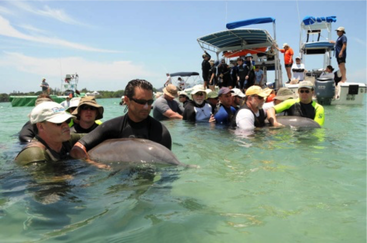Marine mammals

Like sharks and sea turtles, the relationship of Cuba’s marine mammal populations with others around the Gulf and Caribbean are poorly understood. Some research on bottlenose dolphins has been conducted by Cuba’s National Aquarium, and research on manatees has been conducted by other Cuban groups, but greater integration with U.S. and Mexican research will help provide a better regional picture, especially for species that cross national boundaries. Needed research ranges from basic descriptions and assessments of populations, to the identification of specific threats and mitigation measures, as possible. Marine mammals are protected in the three range countries. Anthropogenic threats from destruction of habitat, reduction of food species, environmental contaminants, vessel traffic, recreational and commercial fishing, provisioning and direct hunting remain. While some anthropogenic threats to marine mammals may be localized and relatively straight-forward to identify, other threats, such as climate change or oil spills, may have as yet undetermined impacts over broad geographical scales.
2018 marine mammals working group
2018 Marine Mammals Group Presentation

